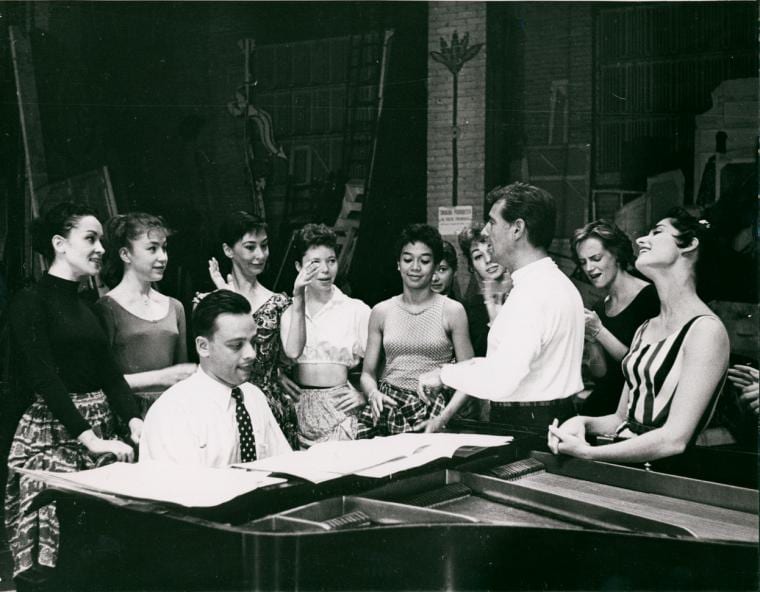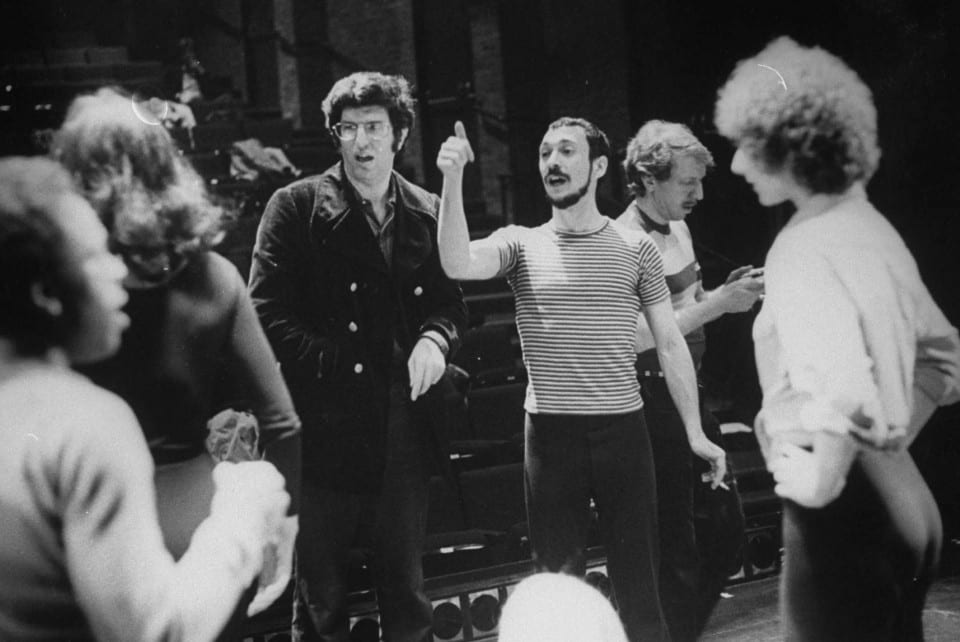The Anatomy Of the Musical

Composer Leonard Bernstein rehearses for the original production of West Side Story (with lyricist Stephen Sondheim at the piano).
Musical theater is an immense and complex subject with a rich history. Music, words, staging, dance, sets, and lighting are all crucial elements that work in a synergistic way, but are usually created by different people. The topic is usually taught from one of two distinct perspectives: as an historical overview, or as an actual creative writing class. The first focuses on dates, people, and pieces, but rarely examines the actual content of the works being studied and how the various elements function within a musical. The latter eschews most history as it is really designed practically: for those who want to make a career as writers of music theater.
I do not believe the two approaches should be mutually exclusive. My experience as a practitioner, an active composer of musical theater, and an experienced educator has lead me to develop a holistic approach to teaching the material. I understand the important historical and artistic trends of the genre and select musicals that capture the important large-scale developments while also deconstructing these musicals from the perspective of an insider.
I understand who is on the creative team and what their roles are, and what the artistic, logistical, and financial processes are behind creating a musical. I also understand how the various elements – score, book, lyrics, direction, choreography – function to tell and propel the narrative. My goal is to guide students, whether appreciative audience members or students of the discipline, and illuminate the inner workings of the genre. Very few instructors do this. There is far more to writing a musical than creating a catchy tune or a clever rhyme. I tailor the analysis of the constituent parts to the level of interest and technical ability of the class whether it’s a graduate seminar or general appreciation course. As always, I pride myself in making complex and unfamiliar concepts comprehensible and fun.

Composer Marvin Hamlisch, guiding force-director-co-choreographer Michael Bennett, and the original cast of A Chorus Line in rehearsal.
An excerpt from I Think You Should Know (from Personals, the musical)





















